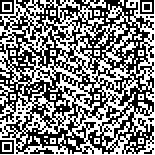马明,范友强,马里,等.高压氧环境下辅以动态关节松动术治疗颈性眩晕的疗效观察[J].中华物理医学与康复杂志,2019,41(10):760-763
扫码阅读全文

|
| 高压氧环境下辅以动态关节松动术治疗颈性眩晕的疗效观察 |
|
| |
| DOI:DOI:10.3760/cma.j.issn.0254-1424.2019.10.010 |
| 中文关键词: 颈性眩晕 动态关节松动术 高压氧 |
| 英文关键词: Cervical vertigo Mulligan therapy Hyperbaric oxygen therapy |
| 基金项目:济宁医学院实践教学教育研究课题(JYSJ2017A04) |
|
| 摘要点击次数: 5830 |
| 全文下载次数: 6170 |
| 中文摘要: |
| 目的 观察在高压氧环境下辅以动态关节松动术治疗颈性眩晕(CV)的疗效。 方法 采用随机数字表法将68例颈性眩晕(CV)患者分为观察组及对照组,每组34例。2组患者均常规给予超短波治疗,另外观察组在0.2 MPa高压氧(HBO)环境下进行动态关节松动术治疗;对照组则在普通治疗室内进行动态关节松动术治疗。上述关节松动术每次治疗15 min,每周治疗5 d,共持续治疗2周。于治疗前、治疗2 d、4 d、1周、2周及随访2个月时分别采用颈性眩晕症状与功能评估量表(ESCV)对2组患者进行评定,同时记录每日眩晕发作次数;于治疗前、治疗2周及随访2个月时采用经颅多普勒超声(TCD)检测2组患者椎动脉(VA)及基底动脉(BA)平均血流速度。 结果 治疗前2组患者每日眩晕次数、ESCV评分、VA及BA平均血流速度组间差异均无统计学意义(P>0.05)。治疗后各时间点发现2组患者上述各项疗效指标均较治疗前明显改善(P<0.05),并且观察组在治疗2周期间及随访2个月时其ESCV评分、每日眩晕次数、VA及BA平均血流速度等均明显优于同期对照组水平,组间差异均具有统计学意义(P<0.05)。 结论 在高压氧环境下辅以动态关节松动术能更有效改善颈性眩晕相关症状,减少颈性眩晕发作频率,该联合疗法值得临床推广、应用。 |
| 英文摘要: |
| Objective To observe the clinical efficacy of the Mulligan technique in treating cervical vertigo (CV) in a hyperbaric oxygen (HPO) environment. Methods Sixty-eight CV patients were randomly divided into a control group and an observation group, each of 34. Both groups were given routine treatment with ultrashortwave irradiation, but the observation group was additionally provided with 15 minutes of treatment based on the Mulligan technique in an environment with oxygen at 0.2 MPa, five days a week for two weeks. Both groups were assessed using the cervical vertigo symptoms and functional assessment scale (ESCV) and the daily frequency of vertigo was recorded before the treatment and 2, 4, 7, 14 and 60 days after treatment began. Moreover, the mean blood flow velocity in the patients′ vertebral (VA) and basilar arteries (BA) was detected using transcranial Doppler sonography before the treatment and after two weeks and two months. Results There were no significant differences between the two groups in any of the measurements before the intervention. Afterward, however, significant improvement in all of the measurements was observed compared with before the treatment. After two weeks and two months the average ESCV score, daily occurrence of CV and mean VA and BA blood flows in the observation group were all significantly superior to those of the control group at the same time points. Conclusion Treatment based on the Mulligan technique in an environment with 0.2 MPa partial pressure of oxygen is a more effective way to relieve the symptoms of cervical vertigo and reduce the frequency of its occurrence. Such treatment is worthy of application in the clinic. |
|
查看全文
查看/发表评论 下载PDF阅读器 |
| 关闭 |